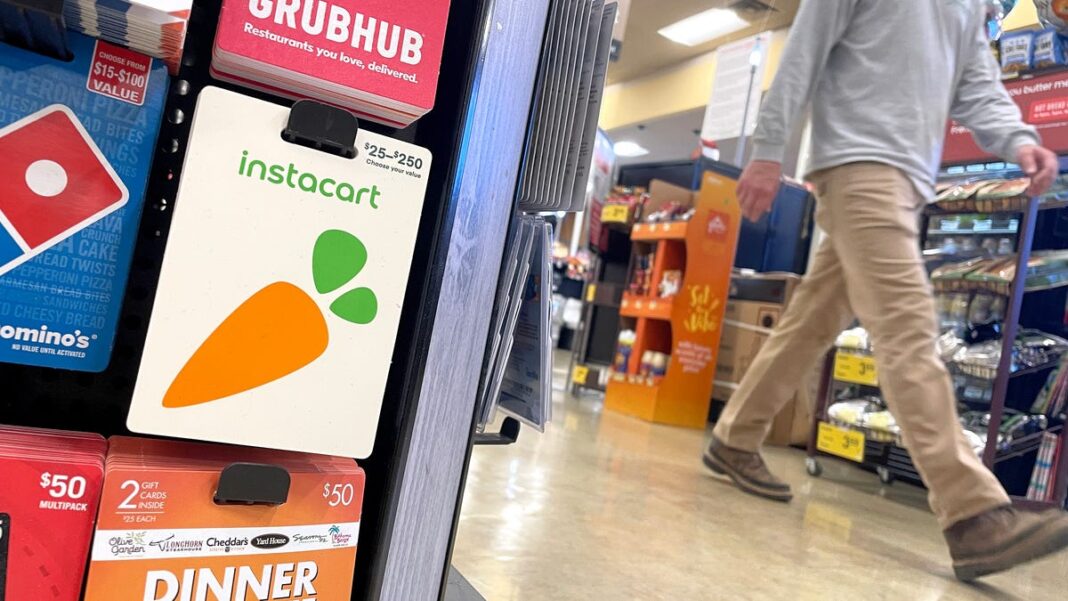Why Gift Cards Are the Most Popular Holiday Gifts for Everyone Involved
The top gift this holiday season may be one of the simplest to find.
It appears shoppers don’t need to spend long hours online or at stores searching for the perfect gift. Studies indicate that people genuinely appreciate receiving gift cards—even if some shoppers are unsure about giving them.
A recent survey from Bank of America revealed that 96% of respondents felt just as happy or even more satisfied with gift cards compared to traditional gifts. Meanwhile, the National Retail Federation reported that gift cards are the top item on consumers’ holiday wish lists, with 53% of shoppers requesting them this year.
“A gift card is the easiest option,” stated Mary Hines Droesch, head of consumer and business products at Bank of America. “It feels more personal than cash, allowing you to choose something significant, like a favorite store or brand, without worrying about sizes or colors. It reduces the risk of making a wrong choice.”
Michael Caraang, a 31-year-old from Beltsville, Maryland, believes there’s no such thing as a bad gift. However, he appreciates that gift cards encourage recipients to make enjoyable purchases. Unlike cash or checks, which often go towards bills like phone payments or car expenses, gift cards can be used for something fun.
Despite this, he often avoids giving gift cards unless he knows it’s something the person will truly enjoy, to prevent an “awkward situation.”
People are generally more willing to receive gift cards than to give them, largely due to social norms, according to Julian Givi, a marketing assistant professor at West Virginia University who has studied gift card preferences.
“When we picture what a gift should be, we envision a traditional wrapped present, but gift cards don’t quite fit this image,” explained Givi. “People hesitate to give them as they might seem less thoughtful; it lacks the personalization of selecting the perfect shirt in the right color and size. It can feel like an easy way out.”
Mary Steffel, an associate professor of marketing at Northeastern University, noted that her research has shown that while people desire to give enjoyable gifts, they also want to appear thoughtful and strengthen their social connection with the recipient, which can make them hesitant to hand over a gift card.
<p”Recipients likely value gift cards more than givers realize, or perhaps more than those giving gifts are comfortable admitting,” she stated.
Nonetheless, researchers note that the negative perception of gift cards is gradually fading. This holiday season, Americans are projected to spend about $28.6 billion on gift cards, according to the NRF. The only category more popular among givers is clothing and accessories.
According to Bank of America’s survey, 68% of individuals choose to give gift cards to provide the recipient with more choice in their gift.
“Often, when people buy specific items for someone, the recipients might not like those items,” remarked Joel Waldfogel, a professor of applied economics at the University of Minnesota and author of “Scroogenomics: Why You Shouldn’t Buy Presents for the Holidays.” “Gift cards uniquely allow the recipient to make the final choice.”
Retailers also find gift cards appealing.
A 2019 survey by branded payments provider Blackhawk Network revealed that 61% of shoppers tend to spend more than the amount of the gift card when making a purchase.
Additionally, gift cards help minimize the costly returns for retailers, as Givi pointed out. Moreover, unused cards can lead to increased revenue for companies, although some states mandate that retailers must transfer these funds to unclaimed property programs, ensuring the money goes back to consumers.
An August survey by Bankrate found that 43% of U.S. adults have an unused gift card. This has allowed some companies to report substantial earnings from “breakage”—the proceeds from unredeemed gift cards. For instance, Starbucks reported $207.6 million in revenue from breakage in fiscal 2024.

